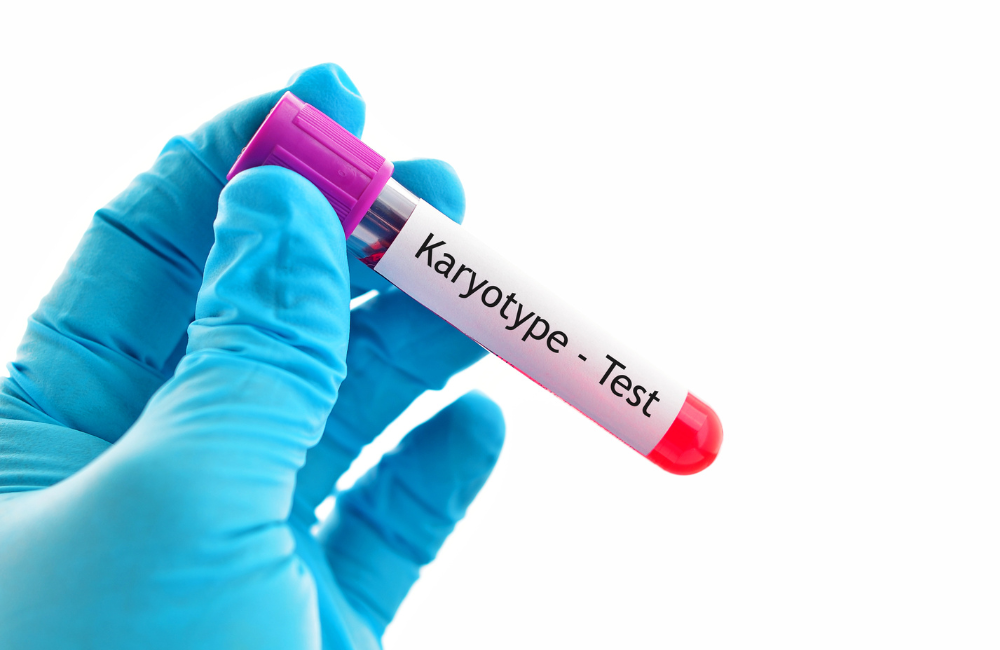
Understanding Karyotype Test: Purpose, Procedure & Results
Overview of Karyotype Test: Unveiling Genetic Insights
QUICK LINKS:
What it is
A karyotype test involves the analysis of chromosomes extracted from a sample of cells, typically obtained from blood, amniotic fluid, or bone marrow. These chromosomes are arranged and photographed to identify any structural anomalies or abnormal chromosome numbers, aiding in the diagnosis of genetic disorders.
How it works
During the procedure, cells from the sample are cultured and treated to arrest them in a specific phase of cell division. This allows technicians to visualize and photograph the chromosomes under a microscope, arranging them by size, banding patterns, and other characteristics. The resulting image is the karyotype, displaying any chromosomal abnormalities.
Symptoms
The need for a karyotype test may arise when an individual exhibits symptoms associated with genetic disorders. These symptoms can vary widely, from developmental delays, intellectual disabilities, to physical abnormalities, indicating the necessity for further investigation through genetic testing.
Causes
Genetic disorders can stem from various factors, including inherited genetic mutations, environmental influences, or chromosomal abnormalities. These alterations can disrupt the normal functioning of genes, leading to health conditions or increased susceptibility to certain diseases.
Diagnosis
The karyotype test plays a pivotal role in diagnosing genetic disorders, aiding healthcare professionals in understanding the underlying genetic causes of observed symptoms. It helps in identifying conditions such as Down syndrome, Turner syndrome, Klinefelter syndrome, and many others.
Condition | Chromosomal Abnormality | Description |
Down syndrome | Trisomy 21 | Presence of an extra copy of chromosome 21, leading to characteristic physical and developmental traits |
Turner syndrome | Monosomy X | Occurs in females with a missing or partially missing X chromosome, resulting in various health issues |
Klinefelter syndrome | XXY | Males have an extra X chromosome, leading to developmental and hormonal differences |
Others | Various abnormalities | Includes structural abnormalities or extra/missing chromosomes contributing to diverse conditions |
Treatment
Treatment for genetic disorders identified through karyotyping aims to manage symptoms and improve the individual’s quality of life. This may involve medication, therapy, surgical interventions, or other specialized interventions based on the specific condition.
Prevention
While not all genetic disorders are preventable, certain measures like genetic counseling before conception, prenatal testing, and early diagnosis can help families make informed decisions. Understanding potential risks and seeking appropriate medical advice are crucial steps toward proactive management.
Conclusion
In conclusion, the karyotype test is a powerful diagnostic tool that offers invaluable insights into an individual’s genetic makeup. Its role in diagnosing genetic disorders, guiding treatment plans, and assisting in family planning is indispensable in modern healthcare.
FAQs
The test itself is painless as it involves collecting cells through a blood sample, amniocentesis, or other non-invasive procedures.
While it can detect many genetic disorders, certain conditions may require other specialized tests for diagnosis.
It can be performed at any age, from prenatal stages to adulthood, based on medical necessity or suspicion of a genetic condition.
Generally, it’s considered safe, but there might be minimal risks associated with the procedures used for sample collection.
It can identify genetic conditions that might pose health risks, aiding in preventive measures and early intervention.
The timeframe varies, but results often take a few weeks to be processed and interpreted by healthcare professionals.
In many cases, insurance may cover the cost of the test if it’s deemed medically necessary.
No, it requires specialized laboratory equipment and trained professionals to conduct the test accurately.
